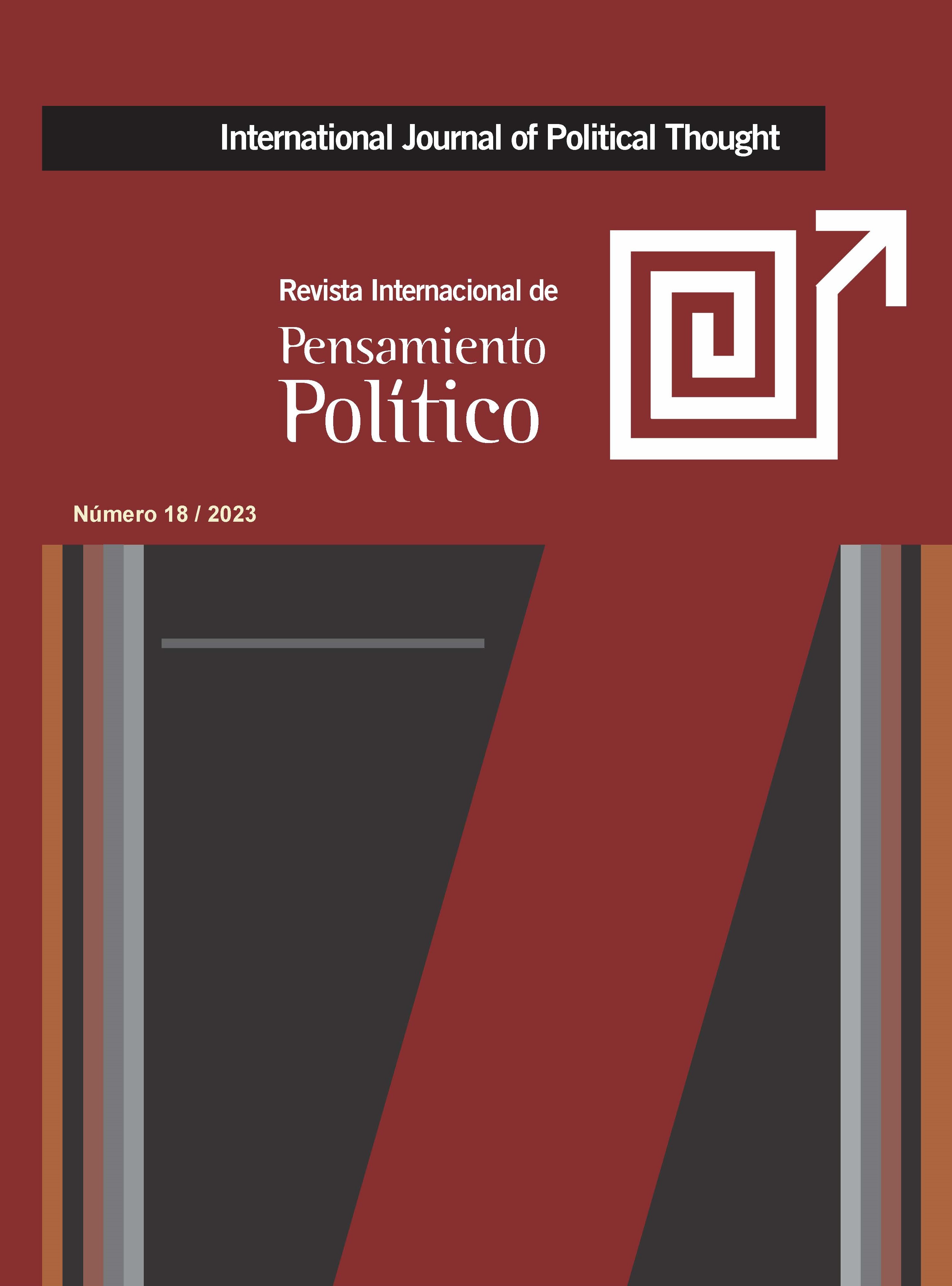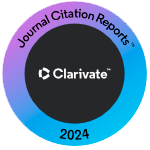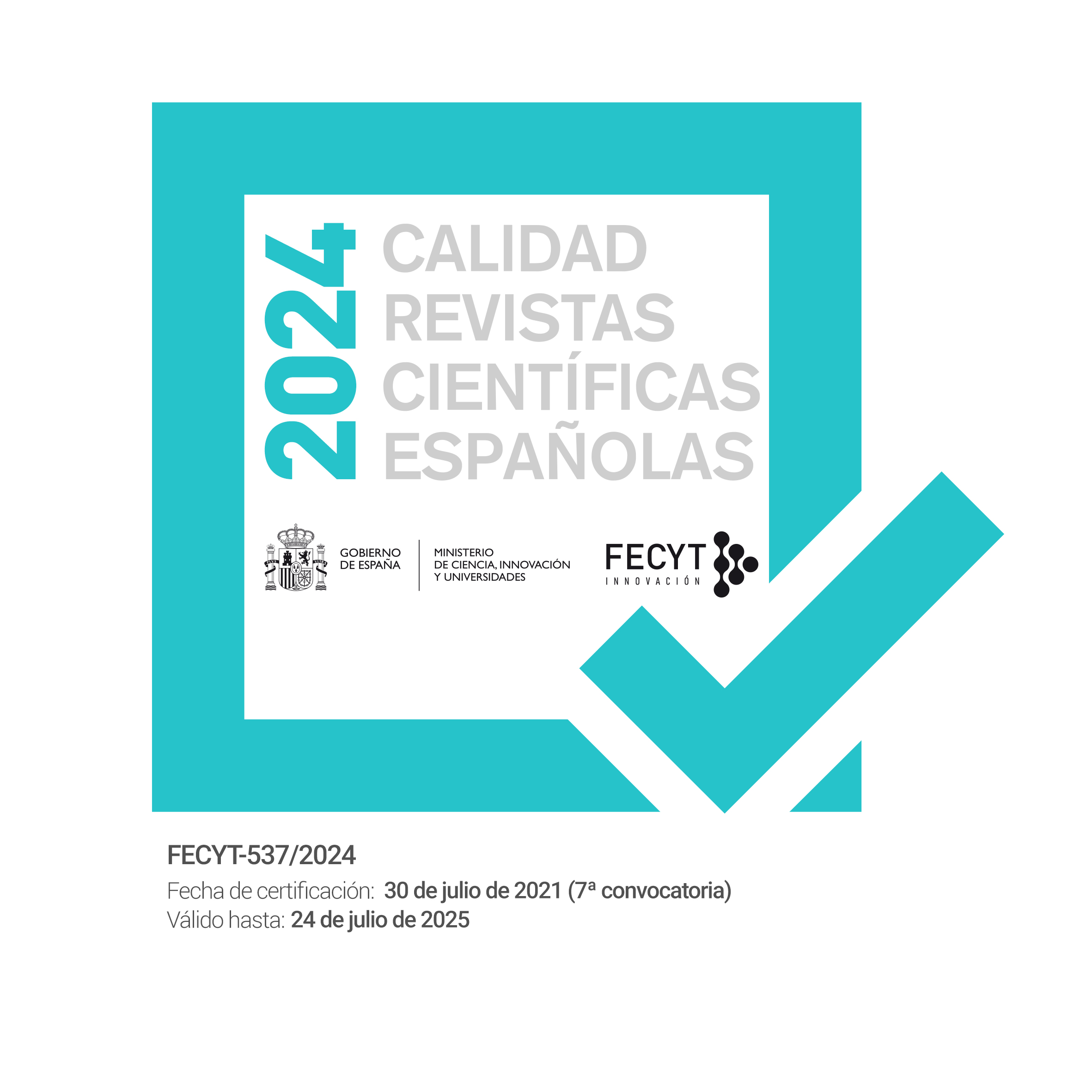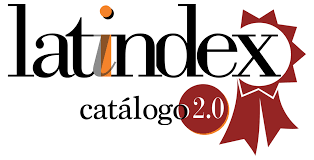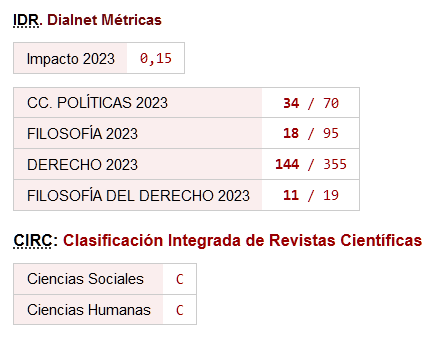“El despertar de las máquinas”
Reflexiones sobre el estatus moral y jurídico de la Inteligencia Artificial
DOI:
https://doi.org/10.46661/revintpensampolit.8529Palabras clave:
Inteligencia artificial, estatus mora, conciencia, dignidad, persona artificial, derechos humanosResumen
La posible creación de formas de Inteligencia Artificial cada vez más cercanas, equivalentes o superiores a la inteligencia humana, nos plantea nuevos y complejos dilemas ético-jurídicos. Dada la creciente sofisticación de la IA, resulta crucial investigar si cabría dotarla de estatus moral y jurídico, y cómo ello se manifestaría en el reconocimiento de derechos y deberes para los entes artificiales. El objetivo es determinar las consecuencias iusfilosóficas derivadas del reconocimiento de derechos a la IA avanzada en relación a los fundamentos de los derechos humanos. Tras el necesario análisis conceptual, se concluye que se requiere un nuevo paradigma ético-jurídico que reconcilie cautamente unos hipotéticos derechos de las entidades con IA con los derechos de la especie humana.
Descargas
Citas
Aleksander, I. (2017), 7. Machine Consciousness. En S. Schneider y M. Velmans (Eds.), The Blackwell companion to consciousness. eTextbook. Blackwell Publishing.
Alpaydin, E. (2020). Introduction to machine learning. MIT press. https://doi.org/10.7551/mitpress/13811.001.0001 DOI: https://doi.org/10.7551/mitpress/13811.001.0001
Arkin, R. C. (2009). Governing lethal behavior: Embedding ethics in a hybrid deliberative/reactive robot architecture. Proceedings of GECCO 2009, 1:121-128. https://doi.org/10.1201/9781420085952 DOI: https://doi.org/10.1201/9781420085952
Asaro, P. M. (2007). Robots and responsibility from a legal perspective. Proceedings of the IEEE, 95(2), 491-498. https://peterasaro.org/writing/ASARO%20Legal%20Perspective.pdf.
Beck, S. (2016). The problem of ascribing legal responsibility in the case of robotics. AI & society, Vol.31 (4), p.473-481, 473-481. https://doi.org/10.1007/s00146-015-0624-5 DOI: https://doi.org/10.1007/s00146-015-0624-5
Bostrom, N. & Yudkowsky, E. (2014) The ethics of artificial intelligence. En The Cambridge Handbook of Artificial Intelligence. Cambridge University Press. https://doi.org/10.1017/CBO9781139046855.020 DOI: https://doi.org/10.1017/CBO9781139046855.020
Bostrom, N. (2005). A history of transhumanist thought. Journal of Evolution and Technology, 14(1). https://doi.org/10.5840/jpr_2005_26 DOI: https://doi.org/10.5840/jpr_2005_26
Bostrom, N. (2014). Superintelligence: Paths, dangers, strategies. eBook. Oxford University Press.
Bostrom, N. (2016). Superinteligencia: Caminos, peligros, estrategias. eBook. Ed. Teell.
Bryson, J J., Theodorou, A. (2019) How society can maintain human-centric artificial intelligence In: Marja Toivonen and Eveliina Saari (ed.), Human-centered digitalization and services (pp. 305-323). Springer. https://doi.org/10.1007/978-981-13-7725-9_16 DOI: https://doi.org/10.1007/978-981-13-7725-9_16
Bryson, J. J. (2010), Robots should be slaves. En Wilks, Yorick. Close engagements with artificial companions: key social, psychological, ethical and design issues. John Benjamins Publishing Company. https://doi.org/10.1075/nlp.8.11bry DOI: https://doi.org/10.1075/nlp.8.11bry
Bryson, J. J. (2020). The artificial intelligence of the ethics of artificial intelligence: An introductory overview for law and regulation. En M. Dubber, F. Pasquale, & S. Das (Eds.), The Oxford Handbook of Ethics of AI (pp. 2-25). Oxford University Press. https://doi.org/10.1093/oxfordhb/9780190067397.013.1 DOI: https://doi.org/10.1093/oxfordhb/9780190067397.013.1
Bryson, J. J., Diamantis, M. E., & Grant, T. D. (2017). Of, for, and by the people: the legal lacuna of synthetic persons. Artificial Intelligence and Law, 25(3), 273-291. https://doi.org/10.1007/s10506-017-9214-9 DOI: https://doi.org/10.1007/s10506-017-9214-9
Chalmers, D. (1996). The conscious mind: In search of a fundamental theory. Oxford University Press.
Chalmers, D. (2010). The singularity: a philosophical analysis. Journal of Consciousness Studies, 17(9-10), 7-65. https://consc.net/papers/singularity.pdf
Chopra, S., & White, L. (2011). A legal theory for autonomous artificial agents. University of Michigan Press. https://doi.org/10.3998/mpub.356801 DOI: https://doi.org/10.3998/mpub.356801
Coeckelbergh, M. (2017). Moral appearances: emotions, robots, and human morality.en Wallach, W. & Asaro,P., Machine Ethics and robot ethics. Routledge.
Dennett, D. (1998). Brainchildren: Essays on designing minds. Penguin Books. https://doi.org/10.7551/mitpress/1663.001.0001 DOI: https://doi.org/10.7551/mitpress/1663.001.0001
Dennett, D. (2017). From bacteria to Bach and back: The evolution of minds. WW Norton & Company.
Dennett, D. C. (1995). La conciencia explicada. Paidos Iberica.
Dennett, D. C. (2008). Can there be intentionality? Should there be? In A. Ross, D. Brook, & D. Thompson (Eds.), Dennett's philosophy: A comprehensive assessment (pp. 147-158). MIT Press
Díez Spelz, J. F. (2021). ¿Robots con derechos?: la frontera entre lo humano y lo no-humano. Reflexiones desde la teoría de los derechos humanos. Revista del Instituto de Ciencias Jurídicas de Puebla, México, 15(48), 259-287. https://doi.org/10.35487/rius.v15i48.2021.742 DOI: https://doi.org/10.35487/rius.v15i48.2021.742
European Commission (2020). White Paper on Artificial Intelligence: a European approach to excellence and trust. https://ec.europa.eu/info/sites/info/files/commission-white-paper-artificial-intelligence-feb2020_en.pdf
Frankish, Keith. (2014). Introduction en Keith Frankish and William M. Ramsey, The Cambridge handbook of artificial intelligence, Cambridge. https://doi.org/10.1017/CBO9781139046855 DOI: https://doi.org/10.1017/CBO9781139046855
Fukuyama, F. (2002). Our posthuman future. Farrar, Straus & Giroux.
Goertzel, B., & Pennachin, C. (Eds.). (2007). Artificial general intelligence. Springer. https://doi.org/10.1007/978-3-540-68677-4 DOI: https://doi.org/10.1007/978-3-540-68677-4
Goodfellow, I., Bengio, Y., & Courville, A. (2016). Deep learning. MIT Press.
Gordon Graell, R. D. (2021). Inteligencia artificial: la caja de herramientas virtuales al servicio de la bioinformática. Tecnociencia, 24(2), 48-65.
Grace, K., Salvatier, J., Dafoe, A., Zhang, B., & Evans, O. (2017). When Will AI Exceed Human Performance? Evidence from AI Experts. ArXiv. http://arxiv.org/abs/1705.08807 https://doi.org/10.1613/jair.1.11222 DOI: https://doi.org/10.1613/jair.1.11222
Gunkel, D. J. (2018). Robot rights. ePub Version 1.0. MIT Press. https://doi.org/10.7551/mitpress/11444.001.0001 DOI: https://doi.org/10.7551/mitpress/11444.001.0001
Habermas, J. (2010). Teoría de la acción comunicativa I. Taurus.
Hallevy, G. (2014). Liability for Crimes Involving Artificial Intelligence Systems. Springer, Cham. https://doi.org/10.1007/978-3-319-10124-8 DOI: https://doi.org/10.1007/978-3-319-10124-8
Inayatullah, S., & McNally, P. (1988). The rights of robots: Technology, culture and law in the 21st century. Futures, 20(2), 119-136. https://doi.org/10.1016/0016-3287(88)90019-5 DOI: https://doi.org/10.1016/0016-3287(88)90019-5
Kant, I. (2012) Fundamentación para una metafísica de las costumbres. Alianza Editorial. Documento original publicado en (1785).
Kurzweil, R. (2005). The singularity is near. Viking Penguin.
Lara, F. & Deckers, J. La inteligencia artificial como asistente socrático para la mejora moral. En Lara, F. y J. Savulescu (Eds), 2021, Más (que) humanos. Biotecnología, inteligencia artificial y ética de la mejora. Tecnos
Leenes, R., Palmerini, E., Koops, B. J., Bertolini, A., Salvini, P., & Lucivero, F. (2017). Regulatory challenges of robotics: some guidelines for addressing legal and ethical issues. Law, Innovation and Technology, 9(1), 1-44. https://doi.org/10.1080/17579961.2017.1304921 DOI: https://doi.org/10.1080/17579961.2017.1304921
Locke, J. (2005) Ensayo sobre el entendimiento humano. Fondo de Cultura Económica. (Documento original publicado en 1689).
Matthias, A. (2004). The responsibility gap: Ascribing responsibility for the actions of learning automata. Ethics and Information Technology, 6(3), 175-183. https://doi.org/10.1007/s10676-004-3422-1 DOI: https://doi.org/10.1007/s10676-004-3422-1
Mendis, D. (2019). "TheCLAIM": A model for allocating responsibility and liability for claims of harm arising from the acts and omissions of artificial intelligent agents. Ethics and Information Technology.
Moor, J. H. (2006). The nature, importance, and difficulty of machine ethics. IEEE intelligent systems, 21(4), 18-21. https://doi.org/10.1109/MIS.2006.80 DOI: https://doi.org/10.1109/MIS.2006.80
Ng, A. (2021). What artificial intelligence can and can't do right now. Harvard Business Review. https://hbr.org/2016/11/what-artificial-intelligence-can-and-cant-do-right-now
Nussbaum, M. C. (2007). Las fronteras de la justicia: Consideraciones sobre la exclusión. Paidós Ibérica.
Penrose, R. (1989). The Emperor's New Mind. Oxford University Press. https://doi.org/10.1093/oso/9780198519737.001.0001 DOI: https://doi.org/10.1093/oso/9780198519737.001.0001
Pico della Mirandola, G. (2006). Discurso sobre la dignidad del hombre. Editorial Pí. (Documento original publicado en 1486).
Porcelli, A. M. (2020). La inteligencia artificial y la robótica: sus dilemas sociales, éticos y jurídicos. Estudios sobre Derecho y Justicia Año 2020, Vol. VI. Número 16, Noviembre 2020 - Febrero 2021, 49-105. https://doi.org/10.32870/dgedj.v6i16.286 DOI: https://doi.org/10.32870/dgedj.v6i16.286
Russell, S. (2019). Human compatible: Artificial intelligence and the problem of control. Penguin.
Russell, S. J., & Norvig, P. (2010). Artificial intelligence: A modern approach (3rd ed.). Prentice Hall.
Russell, S. J., & Norvig, P. (2010). Inteligencia artificial: un enfoque moderno. Pearson Educación.
Searle, J. R. (1980). Minds, brains, and programs. Behavioral and brain sciences, 3(3), 417-424. https://doi.org/10.1017/S0140525X00005756 DOI: https://doi.org/10.1017/S0140525X00005756
Singer, P. (1999). Liberación animal. Trotta. (Documento original publicado en 1975).
Solum, L. B. (1992). Legal personhood for artificial intelligences. North Carolina Law Review, 70(4), 1231-1287. http://scholarship.law.unc.edu/nclr/vol70/iss4/4
Stahl, B. C., Timmermans, J., & Flick, C. (2016). Ethics of emerging information and communication technologies: On the implementation of responsible research and innovation. Science and Public Policy, 43(3), 369-381. https://doi.org/10.1093/scipol/scw069 DOI: https://doi.org/10.1093/scipol/scw069
Tegmark, M. (2017). Life 3.0: Being human in the age of artificial intelligence. Knopf.
van Wynsberghe, A. (2013). Designing robots for care: Care centered value-sensitive design. Science and Engineering Ethics, 19(2), 407-433. https://doi.org/10.1007/s11948-011-9343-6 DOI: https://doi.org/10.1007/s11948-011-9343-6
Villasmil Espinoza, J. J. (2021). Implicaciones de la inteligencia artificial para la humanidad. Revista de la Universidad del Zulia, 12(32), 4-6. https://doi.org/10.46925//rdluz.32.01 DOI: https://doi.org/10.46925//rdluz.32.01
Vinge, V. (1993). The coming technological singularity. Whole Earth Review, 10. http://www.aids-3d.com/technologicalsingularity.pdf
Wallach, W., Allen, C., & Smit, I. (2008). Machine morality: Bottom-up and top-down approaches for modelling human moral faculties. AI & Society, 22(4), 565-582. En Wallach, W. & Asaro,P., (2017) Machine Ethics and robot ethics. Routledge. https://doi.org/10.1007/s00146-007-0099-0 DOI: https://doi.org/10.1007/s00146-007-0099-0
Wojtyla, K. (2011/1979). Persona y acción. Ediciones Palabra.
Descargas
Publicado
Cómo citar
Número
Sección
Licencia
Derechos de autor 2023 Carlos Aguilar Blanc

Esta obra está bajo una licencia internacional Creative Commons Atribución-NoComercial-CompartirIgual 4.0.
Política de acceso abierto
Se permite el acceso libre y abierto de cualquier interesado a todos los contenidos de los números de la revista, sin costo alguno, pudiendo imprimir y trasladar todos los artículos, con la única condición de precisar la fuente y la autoría.
La revista: a) no cobra a las autorías costes por el procesamiento de los artículos ni por el envío de los mismos, b) mantiene el copyright para los autores sin restricciones, c) facilita a los autores conservar sus derechos de publicación sin limitaciones.
La Revista Internacional de Pensamiento Político es una obra original del Laboratorio de Ideas y Prácticas Políticas de la Universidad Pablo de Olavide. Todos los artículos incluidos en la Revista son obra original de sus respectivas autorías. Esta Revista se ofrece libremente a la comunidad científica y académica sin coste alguno y libera los contenidos de acuerdo a la licencia "Reconocimiento-NoComercial-CompartirIgual 4.0 CC BY-NC-SA" del proyecto Creative Commons dispuesta en la siguiente url: https://creativecommons.org/licenses/by-nc-sa/4.0/legalcode
Si deseas traducir o compilar alguno de los artículos aquí disponibles, por favor, ponte en contacto

